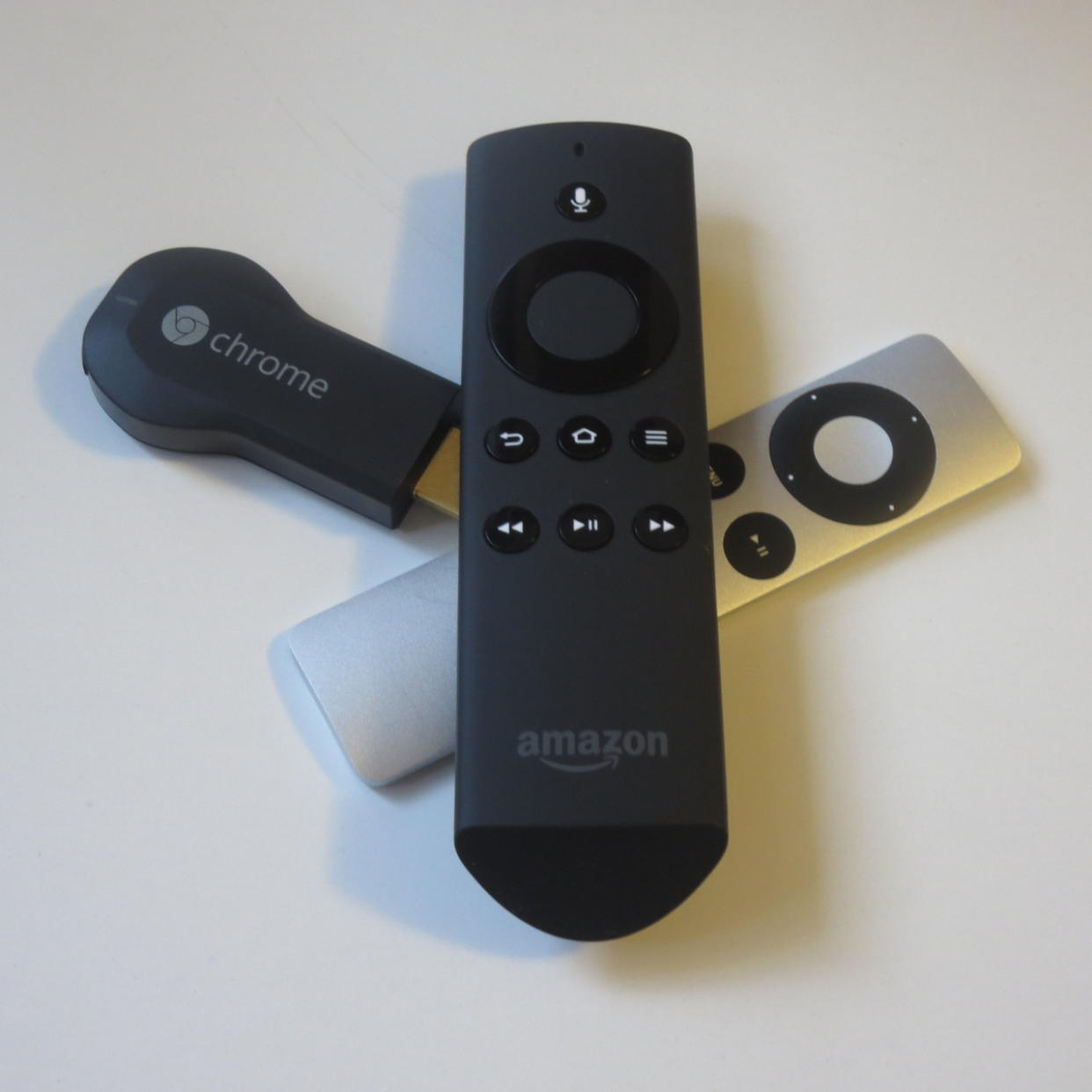Hey Amazon: What Did Apple TV or Chromecast Ever Do to You?

(By Rob Pegoraro/Yahoo Tech)
There’s a new Prime directive at Amazon: Effective October 29, the Web’s biggest retailer will stop selling the two most popular streaming-media players that don’t connect to its Prime Video service.
And Amazon isn’t just booting the Apple TV and Google’s Chromecast from its own shelves. Third-party sellers can’t offer those devices through the site’s Marketplace system either, Bloomberg News first reported.
What did those two gadgets do to earn Amazon’s ire? There are a few different ways to look at this—and Amazon doesn’t look good in any of them.
Does Amazon know Amazon can develop Amazon apps?
The Seattle retail behemoth portrays this as standing up for Amazon Prime subscribers accustomed to the streaming-video part of that $99/year option. Amazon’s PR statement reads in part: “It’s important that the streaming media players we sell interact well with Prime Video in order to avoid customer confusion.”
Well, whose fault is that?
With the current Apple TV, Amazon might have a point. Prime Video is one of a few big-name offerings unavailable on what ranks as the most closed Apple product outside of the iPod.
But Amazon worked around Apple’s curious curation by adding AirPlay wireless streaming to its iOS apps so that you can (to use Amazon’s phrasing) ”fling shows to your Apple TV.” And the upcoming Apple TV will finally add an App Store that Amazon should be free to ship an app for.
There’s no such mystery about the Chromecast. Here’s how Amazon can identify the guilty party: It can take a selfie with a Fire Phone.
Amazon doesn’t need Google’s okay to add Chromecast support to its iOS apps, nor does it require a permission slip to ship an Android Prime Video app to go with its 23 other Android apps.
Instead, Amazon’s video solution for Android users is to ask them to disable a security setting, install Amazon’s Appstore app, and use that to install the Prime Video app otherwise reserved for its Fire devices. It’s so freakishly awkward that I have to wonder if it’s the result of somebody at Amazon’s Seattle headquarters losing a bet.
Amazon sells other devices that don’t support Prime Video
Meanwhile, Amazon’s inventory still includes plenty of other devices that support non-Amazon video services but not its own.
For example, there’s the Western Digital WD TV streamer, $100 and change from various Marketplace sellers. It doesn’t connect to Amazon Video (or Netflix, for that matter) but has yet to get blackballed for that offense.
Then you have the entire category of “smart TVs” that connect to online media sources. Many of them don’t include Amazon on their onscreen menus—for instance, this 32-inch Philips and this 48-inch Sharp—but Amazon not only lets Marketplace sellers offer them but sells them directly.
Amazon even offers a “Supported Internet Services” list on pages listing smart TVs, so you can limit the selection to sets with the services you like—or, if you prefer, show only TVs that don’t support Prime Video.
And, oh yeah, Amazon also sells a lot of smartphones and tablets. The Android models among them only have Amazon’s deliberately inconvenient Prime Video support, and the Windows Phone devices have none at all.
Any risk of customer confusion has yet to stop Amazon from taking your money for every last one of those gadgets.
What makes Apple TV and Chromecast different?
An Amazon spokesperson wouldn’t say anything on the record after providing that statement, and Apple and Google declined to comment, too.
But we do know that Apple and Google, unlike most vendors of smart TVs and smartphones, run video services competing with Prime Video. Perhaps Amazon is not in love with that situation?
Amazon kicking out Google and Apple’s streaming-media hardware while keeping Prime-compatible players like Roku’s might dent Chromecast and Apple TV sales. Or it might remind shoppers that they can get the box of their choice at Best Buy or NewEgg.com or wherever.
We also know Amazon has a history of throwing its weight around in negotiations—its strong-arm tactics in e-books recently earned it an antitrust investigation from the European Union. This commercial blockade looks like Amazon wants to get better terms from Apple and Google for its apps.
With Apple, Amazon might want Apple to stop taking a cut of every in-app transaction, so it could finally sell videos in its iOS app. But with Google, there’s no such requirement to waive; what else does it think it can get, except for maybe having Google pay it for the privilege of having a Prime Video app?
Amazon seems to be forgetting an earlier time when giant companies tried to use their market power to stifle competitors or collect kickbacks from them: the threats by Big Telecom to block or tax Web sites that wound up helping to make the case for net-neutrality rules.
We won’t see “store neutrality” rules as a result of this. Amazon has nowhere near the lock on gadget procurement that Comcast or Verizon has in broadband in individual markets.
And that brings up a third thing we know: When the customer can take their business elsewhere, putting the customer last is a dumb way to run a store.
Email Rob at rob@robpegoraro.com; follow him on Twitter at @robpegoraro.


